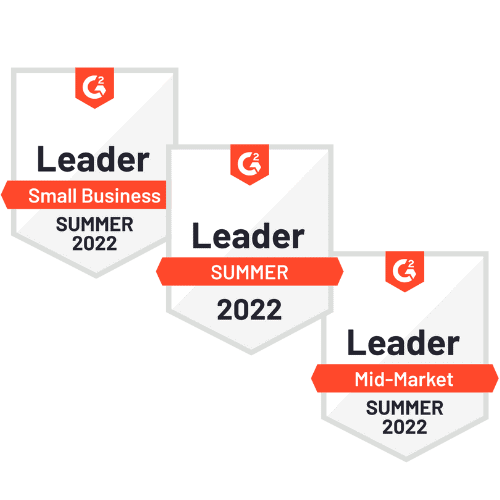Originally Published: April 12, 2021
The best way for a supplier to waste time and money is to go through the extensive process of recruiting partners, then invest even more in onboarding those new partners, and then simply leave them to their own devices and hope for the best. Hope is definitely not a strategy!
What is a Channel Partner Engagement Strategy?
A channel partner engagement strategy is a plan to create a successful collaboration between vendor companies and their indirect sales partners that helps each organization achieve its revenue goals.
We’ve broken down how to create a channel partner engagement plan in 30, 60, and 90 days in one of our blogs here.
Why is Channel Partner Engagement Important?
For over forty years, suppliers have embraced the channel because it’s the most efficient way to reach the large audience they need to reach to be successful. This makes channel partners truly the supplier’s sales and marketing arm, an integral part of their company.
Partners, especially in the information technology and communications (ICT) channel, often can be the gatekeepers to the accounts that tech vendors want to serve. Seventy-three percent of all IT sales are indirect, according to IPED Consulting’s Channelytics. Engaging and partnering with an IT consultant can often be a requirement for serving the large enterprise you have set your sights on selling. In some ways, the partner themselves is really the primary decision-maker suppliers have to sell their solution to.
As Henry Ford, Peter Drucker, Thomas J. Watson, and others have said, “nothing happens until someone sells something.” This is why enthusiastically and effectively engaging and embracing channel partners is so critical to any supplier’s success. Channel partners must be managed just as you would any individual direct salesperson you might hire.
In fact, there’s even more to be gained from a new partner. The salesperson you hire may have an account base to bring with them when they come aboard, though they may be precluded from contacting them. Potentially, the partner has several existing account bases, as many as they have salespeople on staff. Properly motivated and effectively managed, those salespeople start selling for you much further along the sales cycle since they’ve already built relationships with those customers.
Great partners are more than just revenue producers. Closest to the customer, they’re often where your best ideas for new product applications, features, and improvements come from. Fully engaged, great partners help your company grow and evolve.
What to Consider When Creating a Channel Partner Engagement Strategy
Building excellent partner engagement involves more than creating a great relationship with a single point of contact. There are several relationships in multiple departments between vendors and partners which need to be cultivated, each of which contributes to greater success for all, including:
- Upper management must buy into the partnership enthusiastically for explosive growth to be possible. This may require getting a few quick wins accomplished early. Consider bringing highly qualified leads or even sales that your direct sales force closed for the new partner to deploy.
- Sales professionals can help you with those early wins. Make time to review their existing account base with each of them to uncover the best opportunities for quick closes. They know their customers. When they learn about your product, they’ll quickly connect it with those of their customers who would be most interested. While working with them, be sure to show them the money. Best to focus on their best margin opportunities, likely to be their own company’s services that surround and support your product.
- Technology services people are often the ultimate decision-makers in partner organizations regarding which products and external services are included in customer proposals. They can be your best advocates within the partner organization and are often overlooked by short-sighted suppliers. Salespeople also leverage the credibility of the pre-sales technical expert to help convince customers to go with their suggested solutions.
- Operations teams can be your biggest ally or your most significant impediment. The easier and more accessible you make it for them to assure proper configuration and accurate ordering of your products, the more they will smooth the path for you.
Having an ongoing engagement plan with each of these critical departments in your partner’s organization is essential. The channel manager’s primary responsibility is enablement. When sales teams feel confident in their ability to sell and professional services implements flawlessly with orders flowing easily through operations, executive management buy-in will skyrocket.
Other areas for partner programs to optimize for the highest level of partner engagement include:
- Partner Onboarding – Channel partner onboarding is a multi-step, months-long process to introduce and integrate new partners into your partner program. Your partner program onboarding is the first encounter your new partners have with your company after the sales process has ended and contracts have been signed. The quality of your onboarding process will determine whether they buy in to the competency of your organization or engage with a competitor selling a practically identical product. You can create a first-class onboarding experience by:
- Establishing simple and repeatable processes that are consistent for each partner type you serve
- Designating an employee in your organization as responsible for the partner’s entire onboarding process and to operate as a single point of contact for the partner company
- Monitoring and tracking onboarding performance and feedback by gathering metrics and data from your partner relationship management software platform
- Partner Alignment – Depending on the types of solutions you sell, it can be difficult to recruit new partners, so oftentimes vendors can place unrealistic pressure on making each new partner accretive. This pressure is only justified if you have true goal alignment with your partner from the beginning. Take care to only allocate engagement resources to strategic partners who show clear signs of mutual investment in the partnership.Plus, be upfront about your solution strengths and weaknesses to your partners. Unless you’re selling an “all-in-one” set of solutions to encompass an entire enterprise IT environment, you can’t be everything to everyone. Give them critical information about your solution to communicate to end customers, including:
-
- Effective solution applications and use cases
- Industry verticals for the best fit
- Onboarding and deployment timelines
- Customer resources and availability of support
- Potential return on investment
- Solution pricing
-
- Partner Incentives & Rewards – Top channel partner programs increase engagement by offering attractive incentives to partners beyond basic deal compensation, including:
- Bonuses or discounts to increase margin for deal registration
- SPIFFs on partner-sourced deals that meet certain parameters, like contract length and volume, or for bundling multiple services into a single deal
- Quarterly and annual contests for valuable prizes and experiences for reaching sales targets
- Partner awards programs to publicly recognize partner achievements
- President’s Clubs to take advantage of exclusive exotic trips
- Partner advisory board membership to influence the direction of the provider company
- Market development funds (MDF) for reaching tiered revenue thresholds
- To-Partner Communications – Partner communications are vital to relationship development, trust-building, and revenue generation. Their purpose is to recruit, engage, enable and retain partners. Follow these best practices to optimize your communications:
- Make to-partner communications about your partners instead of your company and products
- Customize to-partner communications for partner types and titles
- Be direct and to the point in to-partner communications
- Be purposeful about the frequency and format of to-partner communications
- Use multiple delivery channels for to-partner communications so partners can consume content where they prefer
- Competitive Intelligence – Partners have several vendors selling similar solutions knocking down their doors to access their customer bases. Keeping tabs on how the competition is compensating, incentivizing, enabling, and supporting their partners is key to competing and not losing the next big deal.
You Are Not an Infinite Resource
The continuing success of your channel managers rests in reminding them that they’re not infinitely elastic. That is, they can only manage a certain number of partners effectively. This depends upon many factors, including the complexity of your products, and is sometimes difficult to assess. The best first step is to understand which partners are truly partnering with you and which have simply signed up opportunistically for a single deal.
The Pareto Principle applies here. 80% of your success will come from less than 20% of your partners. How do you know which partners have the potential to be great and which don’t?
How to Measure Partner Engagement: 5 Metrics That Matter
There is a terrible tendency for channel managers to become “pipeline police” and partners resent it. When all they do is show up asking for an updated pipeline report, there’s no exchange of value between the two companies, and partners feel it.
Pipeline leads to the one empirical metric, the desired end result, which is always revenue. Even here, however, the metric must be treated conditionally:
- Driven Revenue is not the same as “sales performance.” The category of “non-transacting partners” is becoming more popular. These are partners who have determined that product sales don’t fit their business model for a variety of reasons. The logistic overhead is too high. Extending capital is too risky. Product sale simply doesn’t fit their intended brand identity. These partners drive sales of a supplier’s product by proposing projects including them, but the actual sale is conducted by another company, perhaps a catalog fulfillment house or distributor.
- Truly active pursuits should come onto your channel managers’ radar when they exceed 80% likelihood. The mistake many make is to track each and every suspect a partner has touched. That’s where the perception of “pipeline police” begins. You want to offer as much help and support as possible to deals that stand a very good chance of closing. Your deal registration program makes this substantially easier to track.
- How much of your money are they spending? Or more precisely, how much are they taking advantage of the resources you make available? A partner who spends no market development funds is likely not marketing at all. A partner who never invites your channel manager or pre-sales specialists on joint customer calls shows no interest. It’s possible they’re as self-sufficient as they claim, but that sufficiency should show up in the number and quality of truly active pursuits they report.
- Customer experience combines historical performance with current and anticipated future state observations. Since you and your partner are extensions of each other, it’s perfectly valid to ask customers, “how are we doing?” Craft your interactions to focus equally on the past, present, and future to get a more fully rounded picture of how well your partners represent and support your products.
- Partner experience is every bit as important as customer or employee experience and requires measurement as such. With the high cost of acquisition for new partners, losing a quality partner is damaging on so many levels. Does the partner feel valued? Is your product a vital part of their brand? Are your people treating them respectfully? It takes so much to build a relationship, yet so little to damage one. Make sure your people know you’re measuring your partners’ evaluation of them.
“Partner” connotes a relationship, and relationships are built between people. Much of your analysis will never be empirical, but that doesn’t mean it can’t be measured. Great partners seek suppliers whose channel managers truly manage the relationship and help them manage their own companies. These five metrics will help you anticipate challenges and manage expectations accordingly. Your channel management team knows intrinsically who your best partners are. They can feel it.

Zift is honored to be ranked a leading provider of Partner Relationship Management by G2, the largest software marketplace with unbiased, validated buyer reviews.
With ZiftONE, you can align your channel marketing, sales, and operations like never before.
We’d be happy to show you how our platform and team can help your channel partner program. Contact our team to learn more today.
Kelsey Worsham
Kelsey is the Senior Content Marketing and Communications Manager at Zift Solutions.







